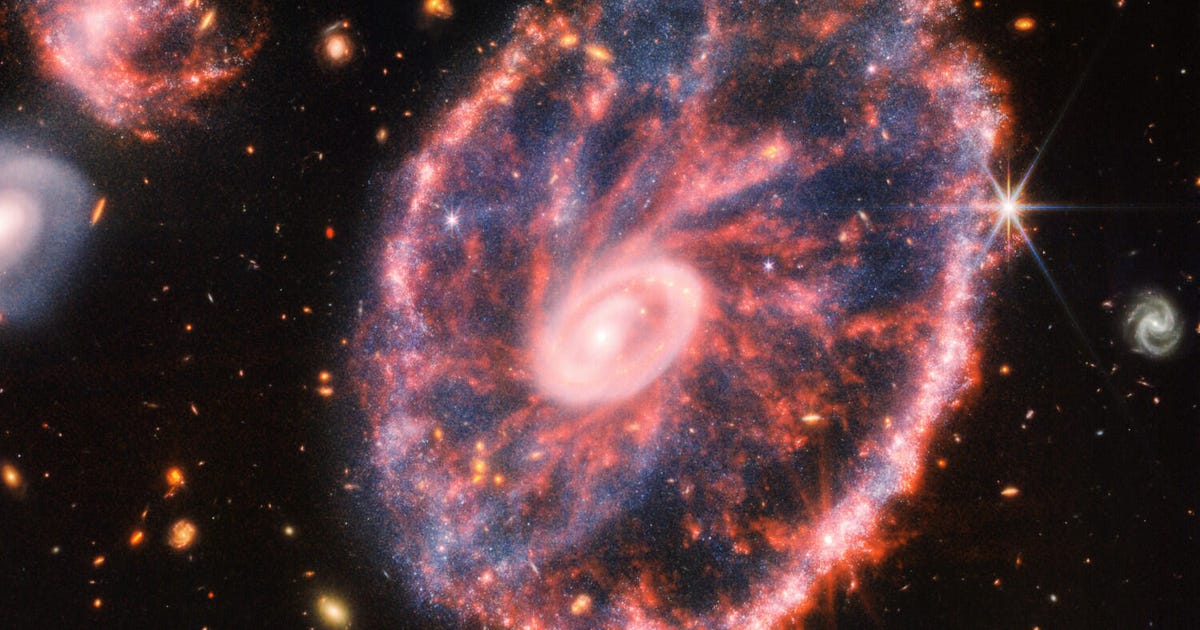
The James Webb Space Telescope made it into orbit, unfurled itself, organized its optics and last month gave us its first round of stunning images and data. Now it’s buckling down to make regular deliveries of images that’ll make you say, “Whoa!” Today, that’s a view of the Cartwheel Galaxy, a place NASA described as “chaos” and a “rare sight.”
The European Space Agency said the galaxy, which is located 500 million light-years away, was “once shrouded in dust and mystery.” But Webb has peeled back the shroud to reveal new information about its stars, composition and future.
It’s easy to see how the circular Cartwheel Galaxy got its nickname. It’s a ring galaxy with a shape NASA likens to the ripples created when a stone is thrown in a pond. It came about due to a cosmic collision between a spiral galaxy (like our own Milky Way) and another, smaller galaxy.
Here’s the full James Webb view of the Cartwheel Galaxy, with other galaxies and stars visible in the background.
NASA, ESA, CSA, STScI“Webb’s observations underscore that the Cartwheel is in a very transitory stage,” said NASA. “The galaxy, which was presumably a normal spiral galaxy like the Milky Way before its collision, will continue to transform.”
The galaxy is a hotbed for baby stars. “The bright core contains a tremendous amount of hot dust with the brightest areas being the home to gigantic young star clusters,” said NASA in a statement on Tuesday. “On the other hand, the outer ring, which has expanded for about 440 million years, is dominated by star formation and supernovas.”
You can compare Webb’s view with a lovely image captured by NASA’s Chandra X-ray Observatory. The venerable Hubble Space Telescope also gazed upon its glory. Webb sees in infrared, which gives it an advantage in being able to peer through the thick dust that can obscure the view for other telescopes.
Hubble and James Webb Space Telescope Images Compared: See the Difference
The new Cartwheel data reveals information about the age of the stars in the galaxy and details about the dust that makes up the “spokes” in the wheel. Webb spotted silicate dust there, a type that’s widespread on Earth.
Webb — the subject of a naming controversy — is a joint project from NASA, ESA and the Canadian Space Agency. It’s designed to peer back into the early days of the universe, study exoplanets and even provide new information on our own solar system. The glimmering Cartwheel Galaxy is a sign that Webb is just getting started. Expect many more “wow” moments to come.


